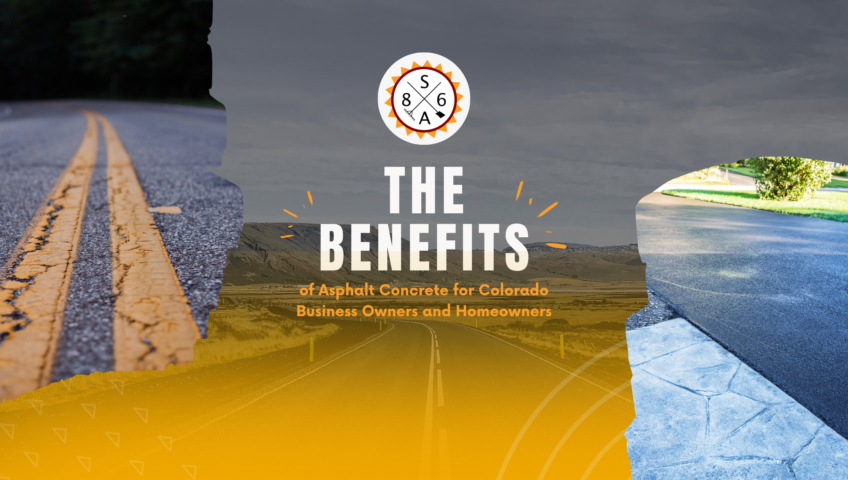
Climate Adaptation in Asphalt: Designing Pavements for Extreme Weather Resilience
As climate change continues to reshape weather patterns across the globe, the need for infrastructure that can withstand increasingly extreme conditions has become more urgent than ever. In the field of road construction, asphalt pavements are particularly vulnerable to the effects of climate change. From intense heatwaves and freezing winters to frequent flooding and unpredictable storms, these climatic shifts present significant challenges for traditional asphalt. As a result, asphalt companies and engineers are now focusing on climate adaptation strategies that will enable pavements to be more resilient in the face of these environmental changes.
This article explores the various ways in which asphalt technology is evolving to meet the demands of a changing climate, the challenges posed by extreme weather, and the innovative solutions that are being developed to ensure that roads remain durable and safe under increasingly harsh conditions.
The Impact of Climate Change on Asphalt Pavements
The global climate is undergoing significant changes, and these changes are directly impacting the performance of asphalt pavements. Various forms of extreme weather, driven by climate change, have adverse effects on road infrastructure:
- Heatwaves: Extreme heat can cause asphalt to soften and deform, leading to issues such as rutting, cracking, and even melting in some cases. Pavements exposed to prolonged periods of high temperatures may experience a reduction in their lifespan, as well as the formation of ruts from heavy traffic.
- Freeze-Thaw Cycles: In colder climates, asphalt pavements are subject to repeated freeze-thaw cycles, which occur when water enters cracks in the pavement, freezes, and then expands. This process leads to further cracking and deterioration of the pavement structure, often requiring costly repairs.
- Heavy Rainfall and Flooding: Intense storms and flooding can cause water to seep into the pavement’s sublayers, weakening the structural integrity of the road. Excessive moisture also accelerates the deterioration of asphalt, leading to potholes, washouts, and erosion of the pavement foundation.
- Sea Level Rise: In coastal regions, rising sea levels pose a serious threat to road infrastructure. Saltwater exposure can damage both asphalt and the underlying materials, making roads more susceptible to deterioration.
These climate-related challenges demand a new approach to asphalt pavement design—one that emphasizes resilience and adaptability to changing weather patterns.
Climate-Adaptive Asphalt Solutions
As the effects of climate change become more pronounced, asphalt companies, engineers, and researchers are developing innovative materials and construction techniques to enhance pavement resilience. Here are several key strategies being employed to adapt asphalt pavements to extreme weather conditions:
1. Temperature-Resistant Asphalt Mixtures
One of the primary ways to combat the effects of extreme heat is through the development of temperature-resistant asphalt mixtures. These mixtures often incorporate additives such as polymers, fibers, and other materials that enhance the asphalt’s ability to withstand high temperatures. By increasing the asphalt’s resistance to heat-induced deformation, these mixtures help prevent rutting and softening during heatwaves.
Additionally, reflective asphalt surfaces, also known as “cool pavements,” are being explored as a solution to combat the urban heat island effect. These surfaces are designed to reflect more sunlight and absorb less heat than traditional asphalt, helping to keep pavement temperatures lower during hot weather. By reducing the surface temperature of the asphalt, cool pavements can also contribute to reducing the overall ambient temperature in urban areas.
2. Permeable Asphalt for Better Drainage
Heavy rainfall and flooding present a major challenge to asphalt pavements, particularly in areas prone to extreme weather events. One solution that has gained traction in recent years is the use of permeable asphalt. This type of asphalt allows water to pass through the pavement and into the underlying soil or drainage system, reducing surface water runoff and the risk of flooding.
Permeable asphalt is particularly effective in managing stormwater and preventing water from accumulating on the road surface, which can lead to hydroplaning and other safety hazards. By promoting better drainage, permeable asphalt also helps prevent water from seeping into the pavement’s sublayers, reducing the risk of structural damage during storms and heavy rainfall.
3. High-Durability Asphalt for Cold Climates
In regions where freeze-thaw cycles are common, asphalt pavements must be designed to withstand repeated expansion and contraction. To address this challenge, high-durability asphalt mixtures are being developed that can resist cracking and other forms of damage caused by freeze-thaw cycles. These mixtures often contain special binders and additives that improve the flexibility and elasticity of the asphalt, allowing it to better accommodate the stresses caused by temperature fluctuations.
In addition to advanced materials, construction techniques such as full-depth asphalt paving are being employed to improve the resilience of roads in cold climates. Full-depth asphalt involves constructing the entire pavement structure using asphalt layers, which reduces the likelihood of water infiltration and minimizes the damage caused by freeze-thaw cycles.
4. Sustainable Asphalt with Recycled Materials
Sustainability is a key consideration in the development of climate-adaptive asphalt solutions. The use of recycled materials, such as reclaimed asphalt pavement (RAP), rubber from recycled tires, and even plastic waste, is helping to create more environmentally friendly asphalt mixtures. These materials not only reduce the need for virgin aggregates and bitumen but also enhance the durability and flexibility of the pavement.
Recycled asphalt materials are particularly beneficial in extreme weather conditions, as they often have improved resistance to cracking, rutting, and other forms of pavement distress. Moreover, the incorporation of recycled materials aligns with broader efforts to reduce the carbon footprint of road construction and support circular economy initiatives.
5. Polymer-Modified Asphalt for Enhanced Flexibility
Polymer-modified asphalt (PMA) is another innovation that is helping pavements adapt to extreme weather conditions. By adding polymers to the asphalt mixture, the material gains improved elasticity, making it more resistant to cracking and deformation. This added flexibility is especially important in areas subject to large temperature fluctuations, as it allows the pavement to expand and contract without sustaining significant damage.
Polymer-modified asphalt is also more resistant to the effects of water and moisture, making it a valuable solution for regions prone to heavy rainfall and flooding. The enhanced durability of PMA helps extend the lifespan of the pavement, reducing the need for frequent repairs and maintenance.
Challenges and Considerations
While climate-adaptive asphalt technologies offer significant benefits, there are still challenges to be addressed in their widespread implementation. One of the primary concerns is cost. Advanced asphalt mixtures and construction techniques often come with higher initial costs than traditional methods, which can be a barrier for many municipalities and road agencies operating on tight budgets.
Additionally, the long-term performance of some climate-adaptive materials is still being studied. As these technologies are relatively new, further research is needed to determine how they perform over extended periods of time under various environmental conditions.
There are also challenges related to the integration of these solutions into existing infrastructure. Retrofitting older roads with climate-adaptive asphalt requires careful planning and coordination, especially in densely populated urban areas where road closures and construction can be disruptive.
The Path Forward
As climate change continues to drive more extreme weather events, the need for resilient road infrastructure will only grow. The asphalt industry is at the forefront of this effort, developing innovative solutions to ensure that pavements can withstand the challenges of a changing climate.
By investing in climate-adaptive asphalt technologies—such as temperature-resistant mixtures, permeable pavements, and polymer-modified asphalt—road builders and governments can help create more durable, sustainable, and safe roadways for the future. The path forward requires collaboration between researchers, engineers, and policymakers to ensure that climate adaptation strategies are implemented effectively and that roads are designed to meet the demands of the new climate reality.
Paving the Way
In an era of unprecedented climate change, the resilience of our infrastructure is more important than ever. Asphalt pavements, which form the backbone of modern transportation networks, must be designed to adapt to extreme weather conditions and ensure the safety and durability of our roads. Through innovative materials, advanced construction techniques, and a commitment to sustainability, the asphalt industry is rising to the challenge of climate adaptation, paving the way for roads that are stronger, smarter, and more resilient in the face of an uncertain future.
As climate change continues to reshape weather patterns across the globe, the need for infrastructure that can withstand increasingly extreme conditions has become more urgent than ever. In the field of road construction, asphalt pavements are particularly vulnerable to the effects of climate change. From intense heatwaves and freezing winters to frequent flooding and unpredictable storms, these climatic shifts present significant challenges for traditional asphalt. As a result, asphalt companies and engineers are now focusing on climate adaptation strategies that will enable pavements to be more resilient in the face of these environmental changes.
This article explores the various ways in which asphalt technology is evolving to meet the demands of a changing climate, the challenges posed by extreme weather, and the innovative solutions that are being developed to ensure that roads remain durable and safe under increasingly harsh conditions.
The Impact of Climate Change on Asphalt Pavements
The global climate is undergoing significant changes, and these changes are directly impacting the performance of asphalt pavements. Various forms of extreme weather, driven by climate change, have adverse effects on road infrastructure:
- Heatwaves: Extreme heat can cause asphalt to soften and deform, leading to issues such as rutting, cracking, and even melting in some cases. Pavements exposed to prolonged periods of high temperatures may experience a reduction in their lifespan, as well as the formation of ruts from heavy traffic.
- Freeze-Thaw Cycles: In colder climates, asphalt pavements are subject to repeated freeze-thaw cycles, which occur when water enters cracks in the pavement, freezes, and then expands. This process leads to further cracking and deterioration of the pavement structure, often requiring costly repairs.
- Heavy Rainfall and Flooding: Intense storms and flooding can cause water to seep into the pavement’s sublayers, weakening the structural integrity of the road. Excessive moisture also accelerates the deterioration of asphalt, leading to potholes, washouts, and erosion of the pavement foundation.
- Sea Level Rise: In coastal regions, rising sea levels pose a serious threat to road infrastructure. Saltwater exposure can damage both asphalt and the underlying materials, making roads more susceptible to deterioration.
These climate-related challenges demand a new approach to asphalt pavement design—one that emphasizes resilience and adaptability to changing weather patterns.
Climate-Adaptive Asphalt Solutions
As the effects of climate change become more pronounced, asphalt companies, engineers, and researchers are developing innovative materials and construction techniques to enhance pavement resilience. Here are several key strategies being employed to adapt asphalt pavements to extreme weather conditions:
1. Temperature-Resistant Asphalt Mixtures
One of the primary ways to combat the effects of extreme heat is through the development of temperature-resistant asphalt mixtures. These mixtures often incorporate additives such as polymers, fibers, and other materials that enhance the asphalt’s ability to withstand high temperatures. By increasing the asphalt’s resistance to heat-induced deformation, these mixtures help prevent rutting and softening during heatwaves.
Additionally, reflective asphalt surfaces, also known as “cool pavements,” are being explored as a solution to combat the urban heat island effect. These surfaces are designed to reflect more sunlight and absorb less heat than traditional asphalt, helping to keep pavement temperatures lower during hot weather. By reducing the surface temperature of the asphalt, cool pavements can also contribute to reducing the overall ambient temperature in urban areas.
2. Permeable Asphalt for Better Drainage
Heavy rainfall and flooding present a major challenge to asphalt pavements, particularly in areas prone to extreme weather events. One solution that has gained traction in recent years is the use of permeable asphalt. This type of asphalt allows water to pass through the pavement and into the underlying soil or drainage system, reducing surface water runoff and the risk of flooding.
Permeable asphalt is particularly effective in managing stormwater and preventing water from accumulating on the road surface, which can lead to hydroplaning and other safety hazards. By promoting better drainage, permeable asphalt also helps prevent water from seeping into the pavement’s sublayers, reducing the risk of structural damage during storms and heavy rainfall.
3. High-Durability Asphalt for Cold Climates
In regions where freeze-thaw cycles are common, asphalt pavements must be designed to withstand repeated expansion and contraction. To address this challenge, high-durability asphalt mixtures are being developed that can resist cracking and other forms of damage caused by freeze-thaw cycles. These mixtures often contain special binders and additives that improve the flexibility and elasticity of the asphalt, allowing it to better accommodate the stresses caused by temperature fluctuations.
In addition to advanced materials, construction techniques such as full-depth asphalt paving are being employed to improve the resilience of roads in cold climates. Full-depth asphalt involves constructing the entire pavement structure using asphalt layers, which reduces the likelihood of water infiltration and minimizes the damage caused by freeze-thaw cycles.
4. Sustainable Asphalt with Recycled Materials
Sustainability is a key consideration in the development of climate-adaptive asphalt solutions. The use of recycled materials, such as reclaimed asphalt pavement (RAP), rubber from recycled tires, and even plastic waste, is helping to create more environmentally friendly asphalt mixtures. These materials not only reduce the need for virgin aggregates and bitumen but also enhance the durability and flexibility of the pavement.
Recycled asphalt materials are particularly beneficial in extreme weather conditions, as they often have improved resistance to cracking, rutting, and other forms of pavement distress. Moreover, the incorporation of recycled materials aligns with broader efforts to reduce the carbon footprint of road construction and support circular economy initiatives.
5. Polymer-Modified Asphalt for Enhanced Flexibility
Polymer-modified asphalt (PMA) is another innovation that is helping pavements adapt to extreme weather conditions. By adding polymers to the asphalt mixture, the material gains improved elasticity, making it more resistant to cracking and deformation. This added flexibility is especially important in areas subject to large temperature fluctuations, as it allows the pavement to expand and contract without sustaining significant damage.
Polymer-modified asphalt is also more resistant to the effects of water and moisture, making it a valuable solution for regions prone to heavy rainfall and flooding. The enhanced durability of PMA helps extend the lifespan of the pavement, reducing the need for frequent repairs and maintenance.
Challenges and Considerations
While climate-adaptive asphalt technologies offer significant benefits, there are still challenges to be addressed in their widespread implementation. One of the primary concerns is cost. Advanced asphalt mixtures and construction techniques often come with higher initial costs than traditional methods, which can be a barrier for many municipalities and road agencies operating on tight budgets.
Additionally, the long-term performance of some climate-adaptive materials is still being studied. As these technologies are relatively new, further research is needed to determine how they perform over extended periods of time under various environmental conditions.
There are also challenges related to the integration of these solutions into existing infrastructure. Retrofitting older roads with climate-adaptive asphalt requires careful planning and coordination, especially in densely populated urban areas where road closures and construction can be disruptive.
The Path Forward
As climate change continues to drive more extreme weather events, the need for resilient road infrastructure will only grow. The asphalt industry is at the forefront of this effort, developing innovative solutions to ensure that pavements can withstand the challenges of a changing climate.
By investing in climate-adaptive asphalt technologies—such as temperature-resistant mixtures, permeable pavements, and polymer-modified asphalt—road builders and governments can help create more durable, sustainable, and safe roadways for the future. The path forward requires collaboration between researchers, engineers, and policymakers to ensure that climate adaptation strategies are implemented effectively and that roads are designed to meet the demands of the new climate reality.
Paving the Way
In an era of unprecedented climate change, the resilience of our infrastructure is more important than ever. Asphalt pavements, which form the backbone of modern transportation networks, must be designed to adapt to extreme weather conditions and ensure the safety and durability of our roads. Through innovative materials, advanced construction techniques, and a commitment to sustainability, the asphalt industry is rising to the challenge of climate adaptation, paving the way for roads that are stronger, smarter, and more resilient in the face of an uncertain future.




